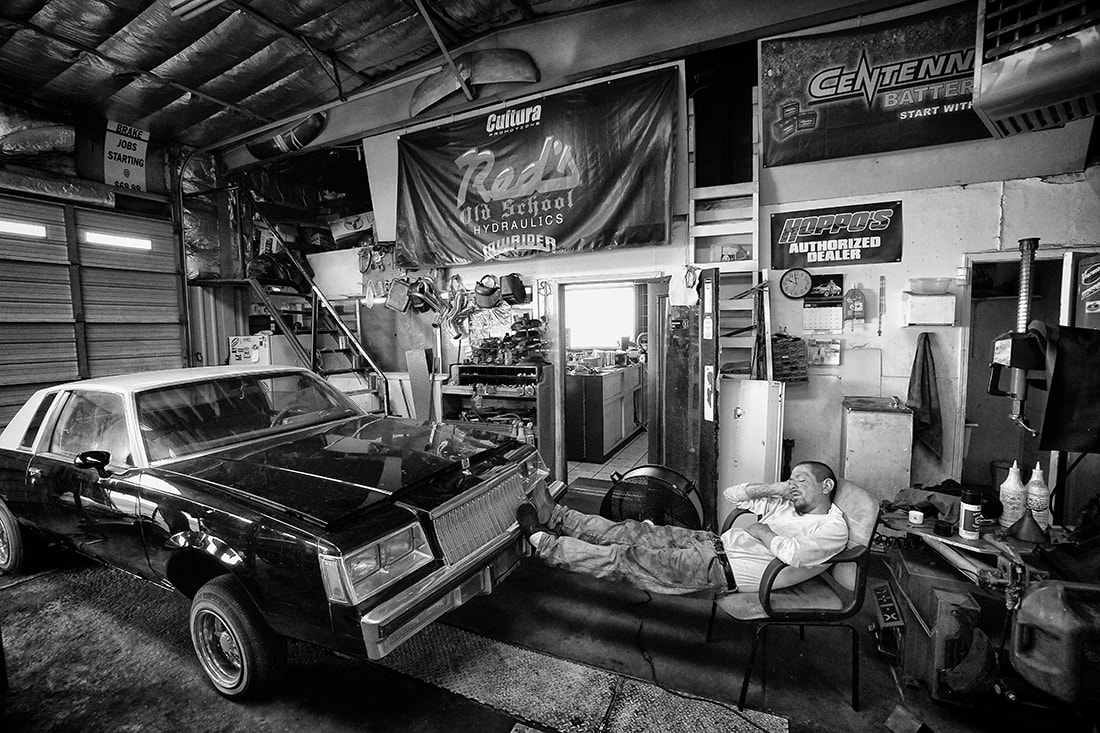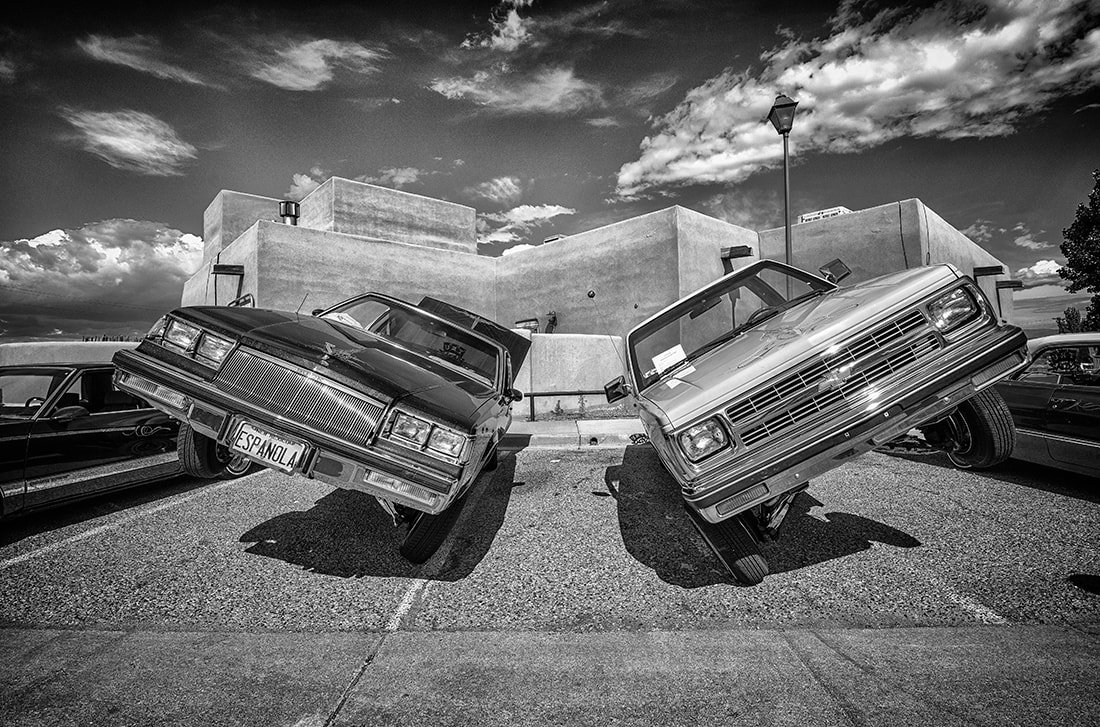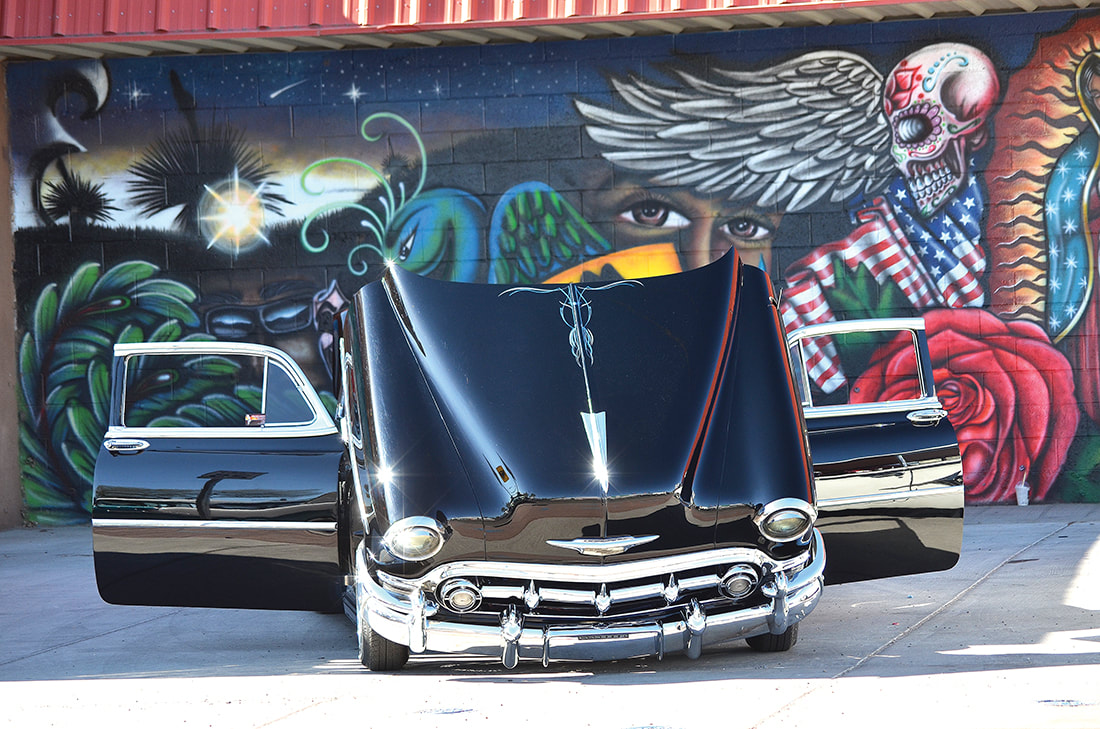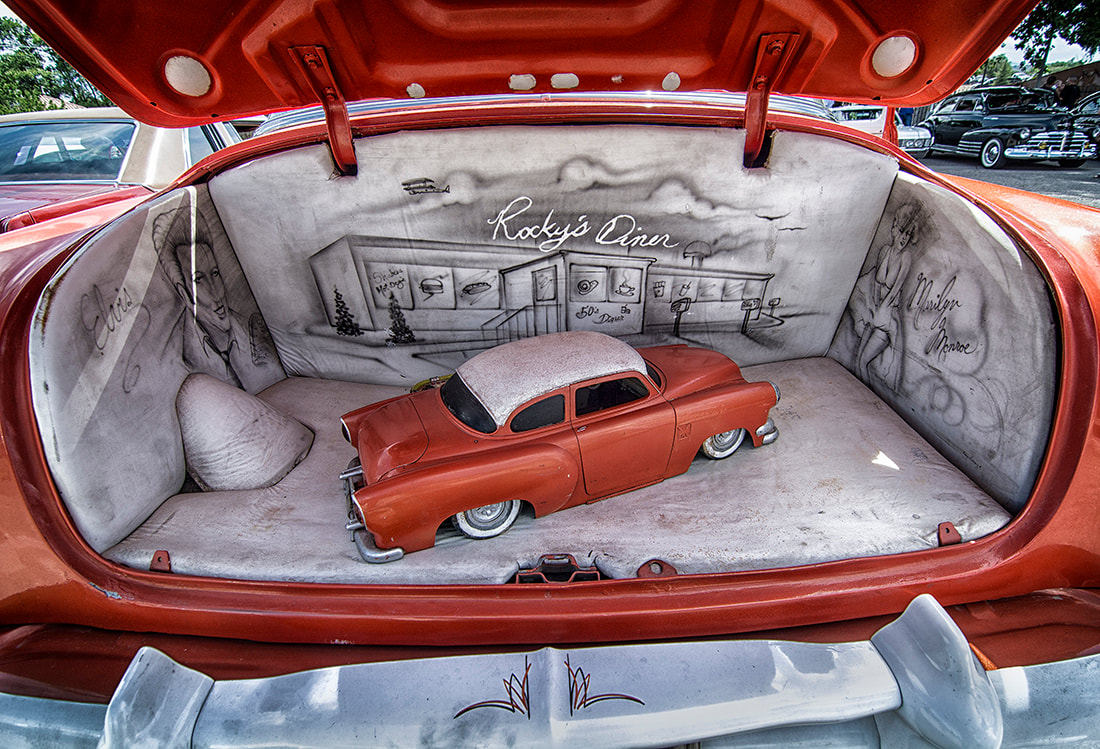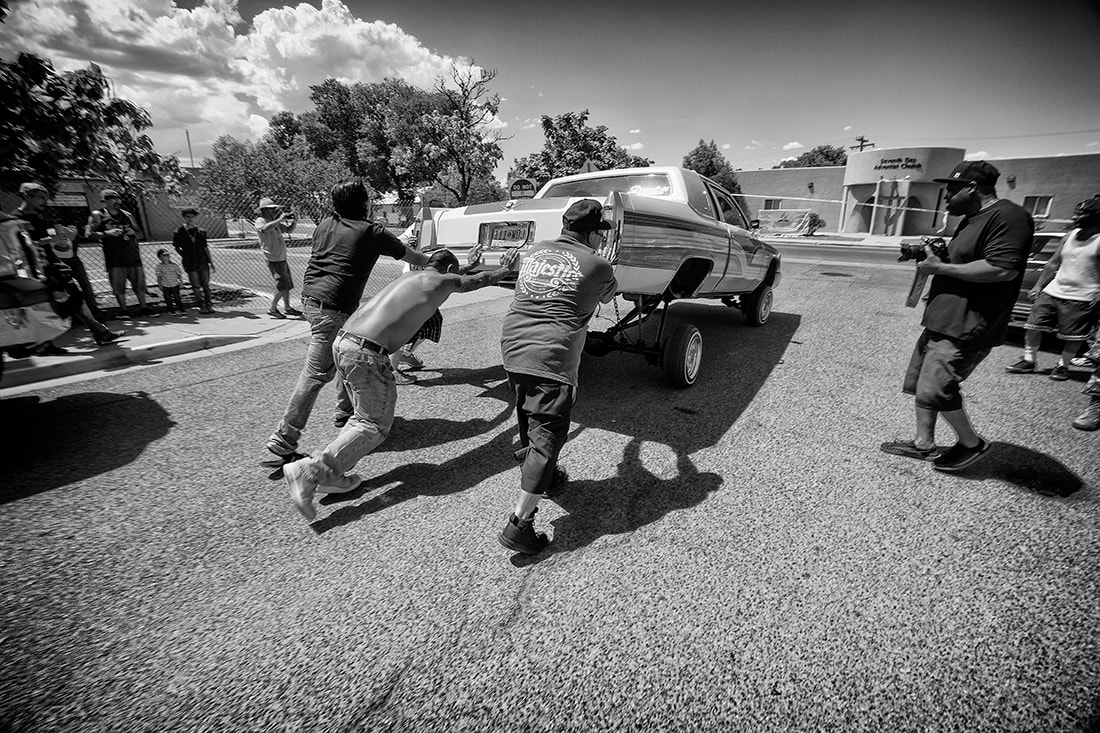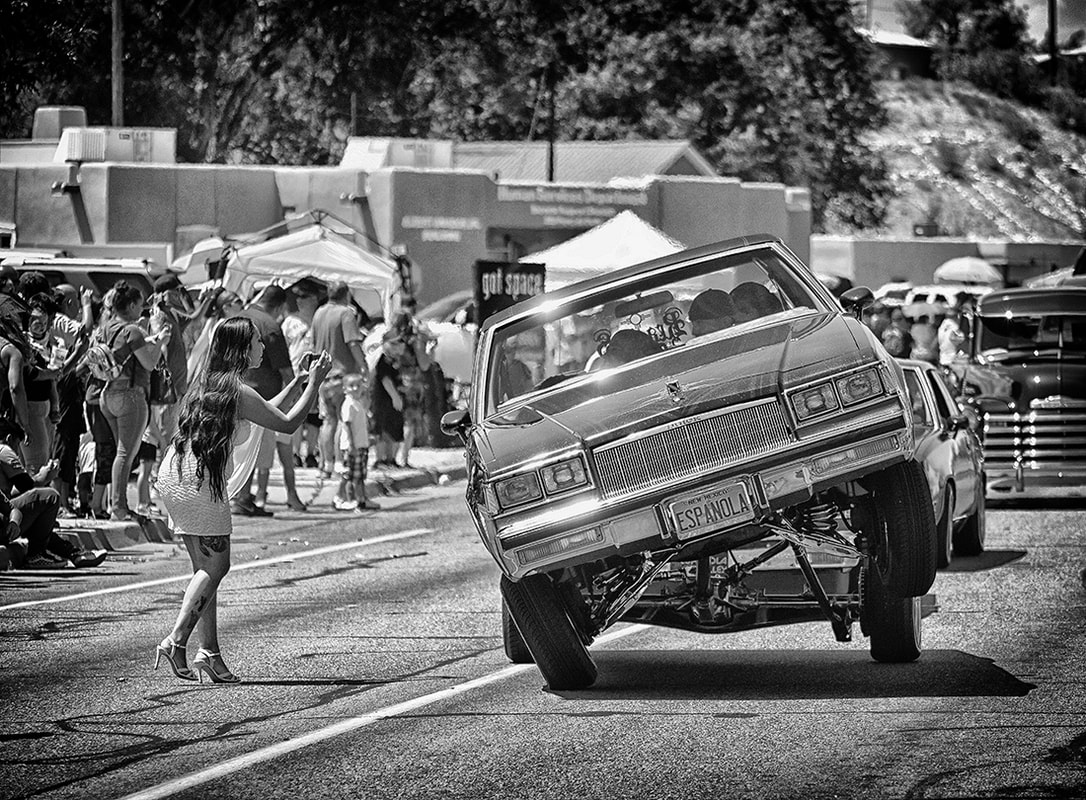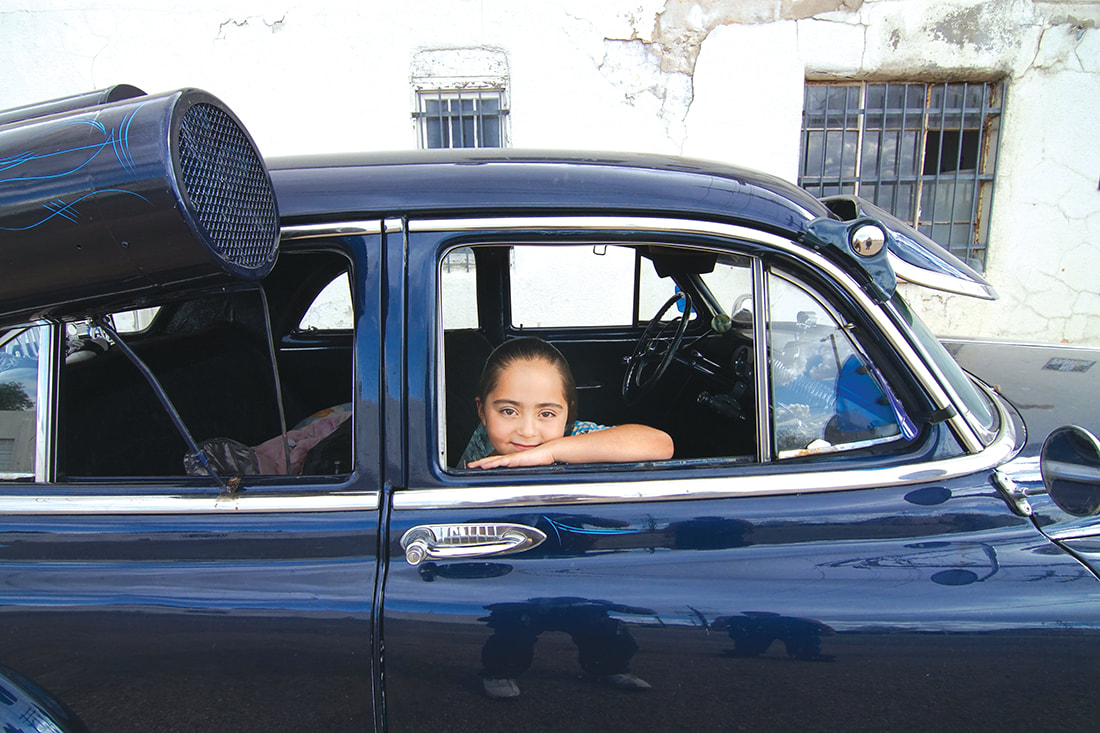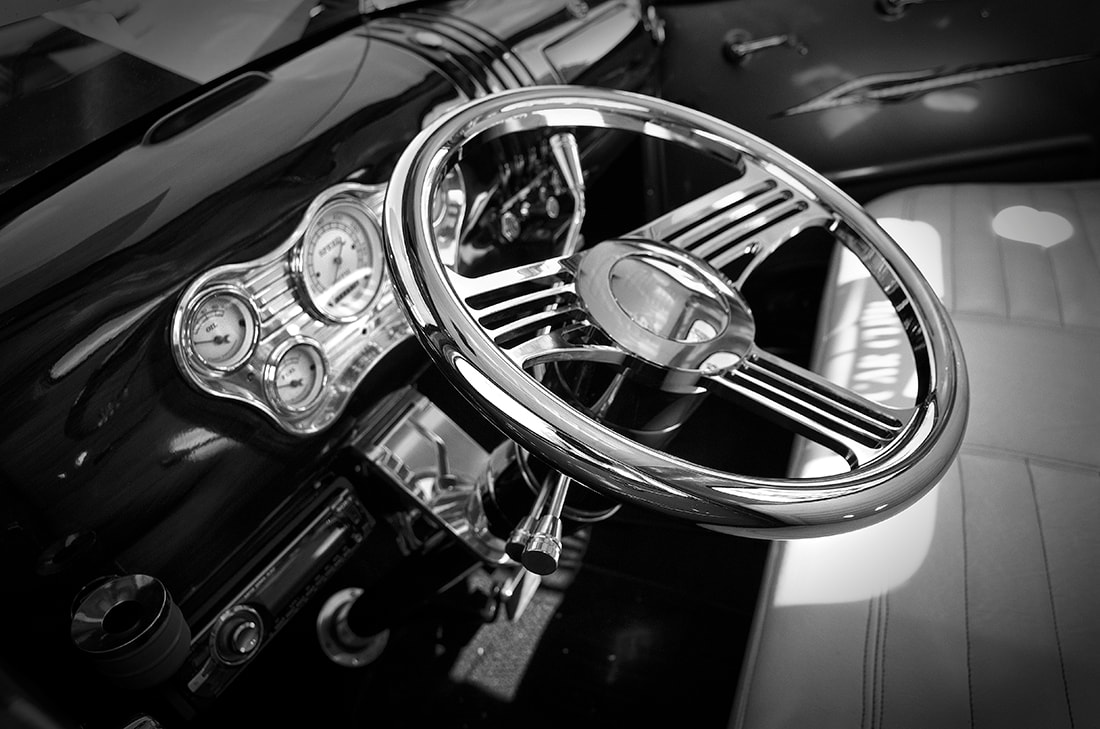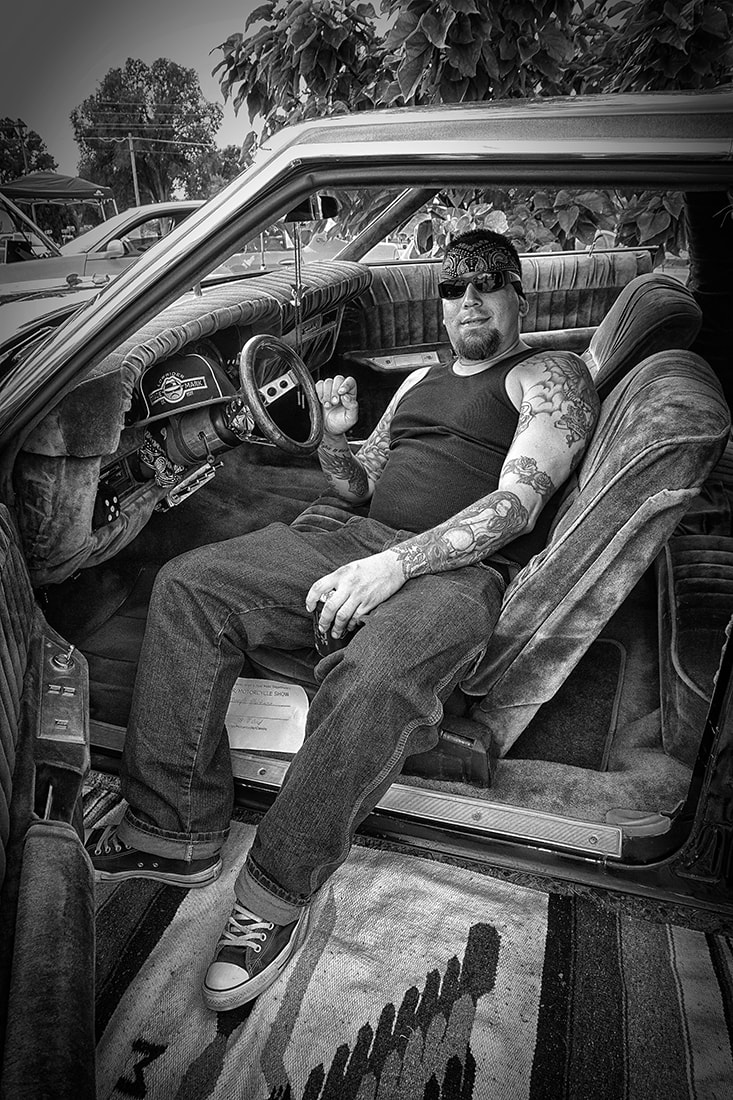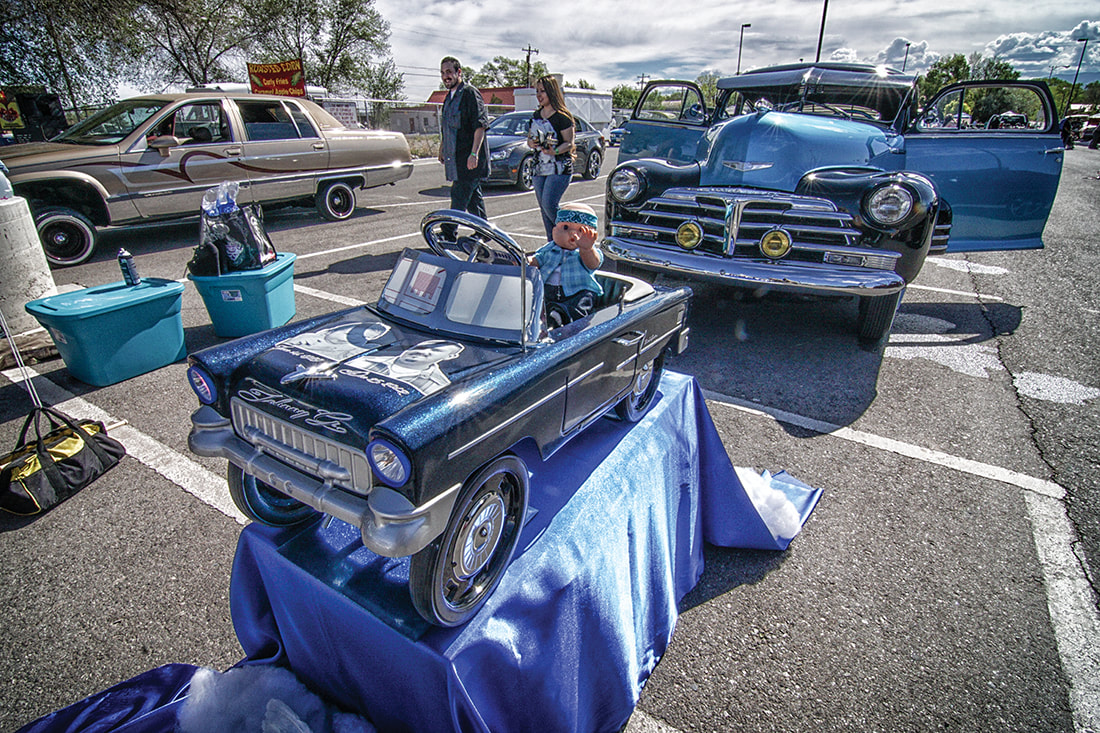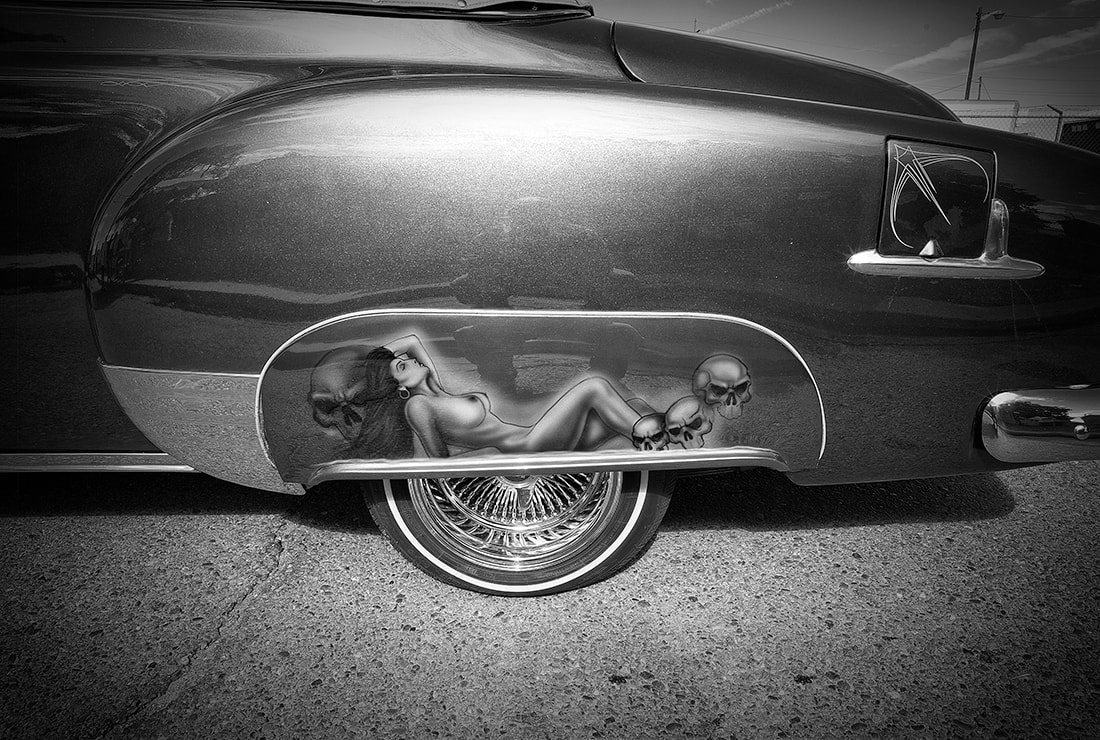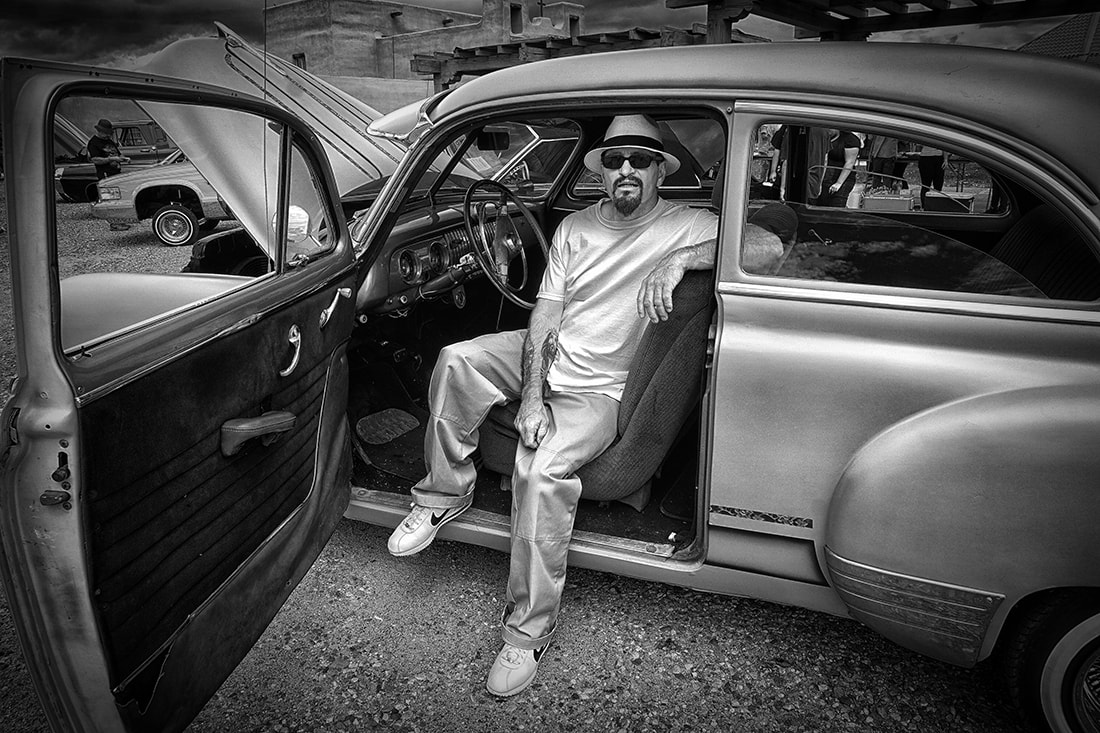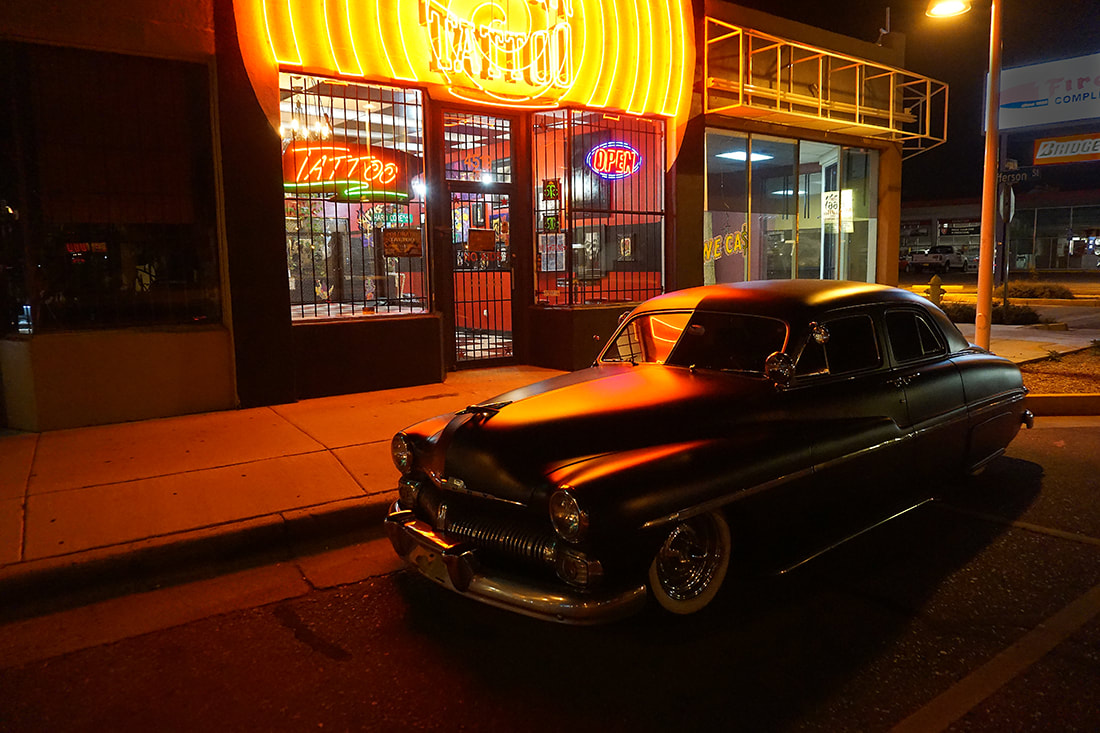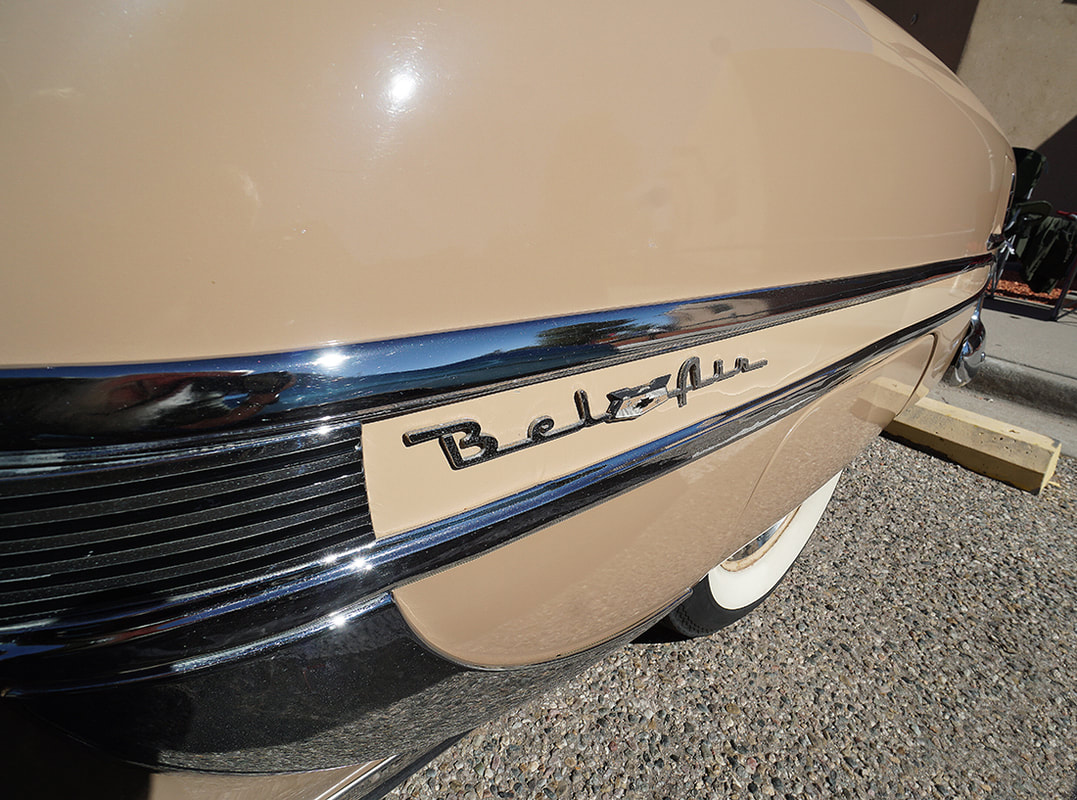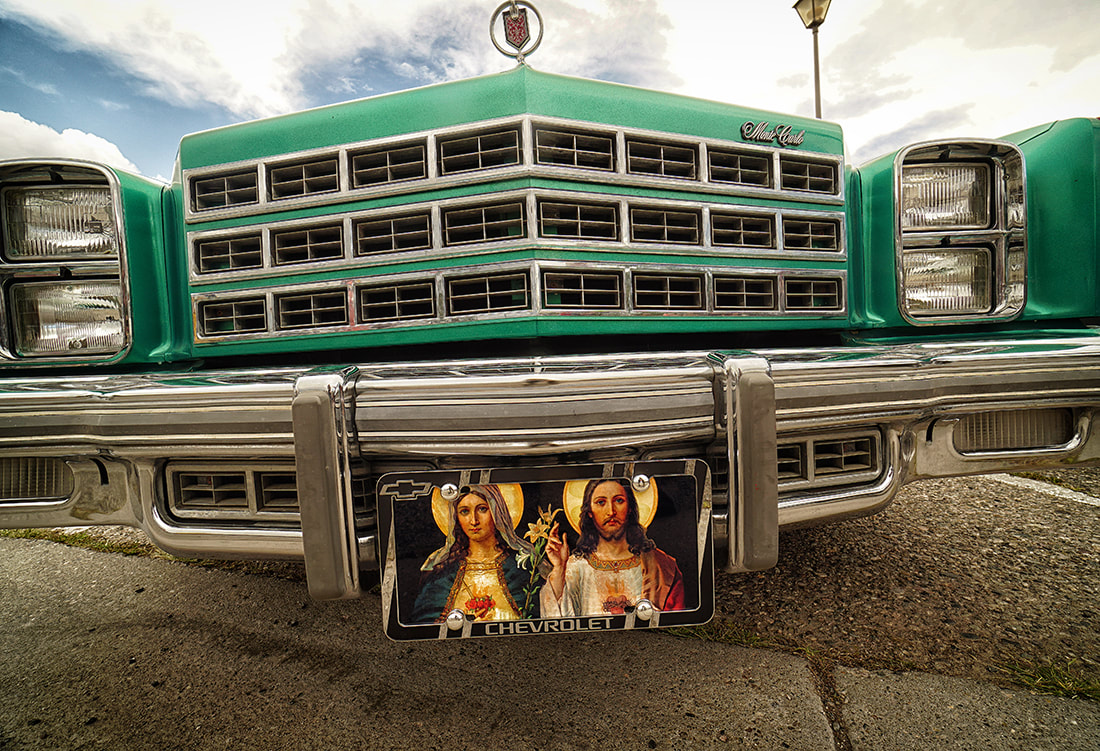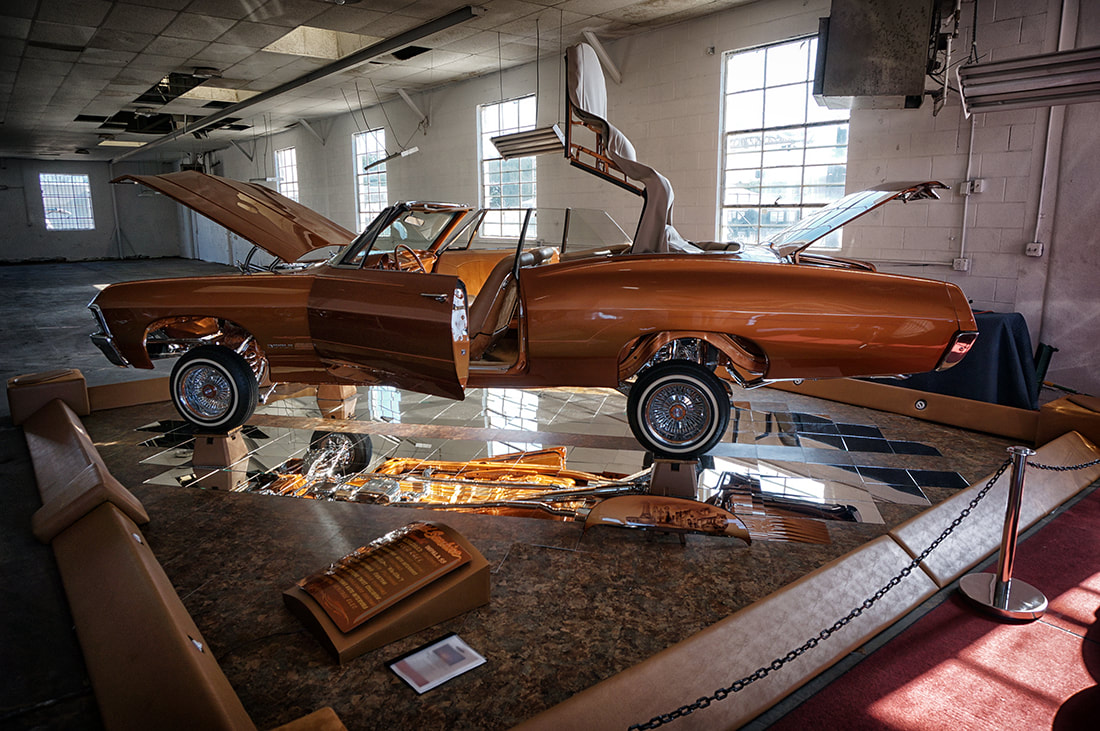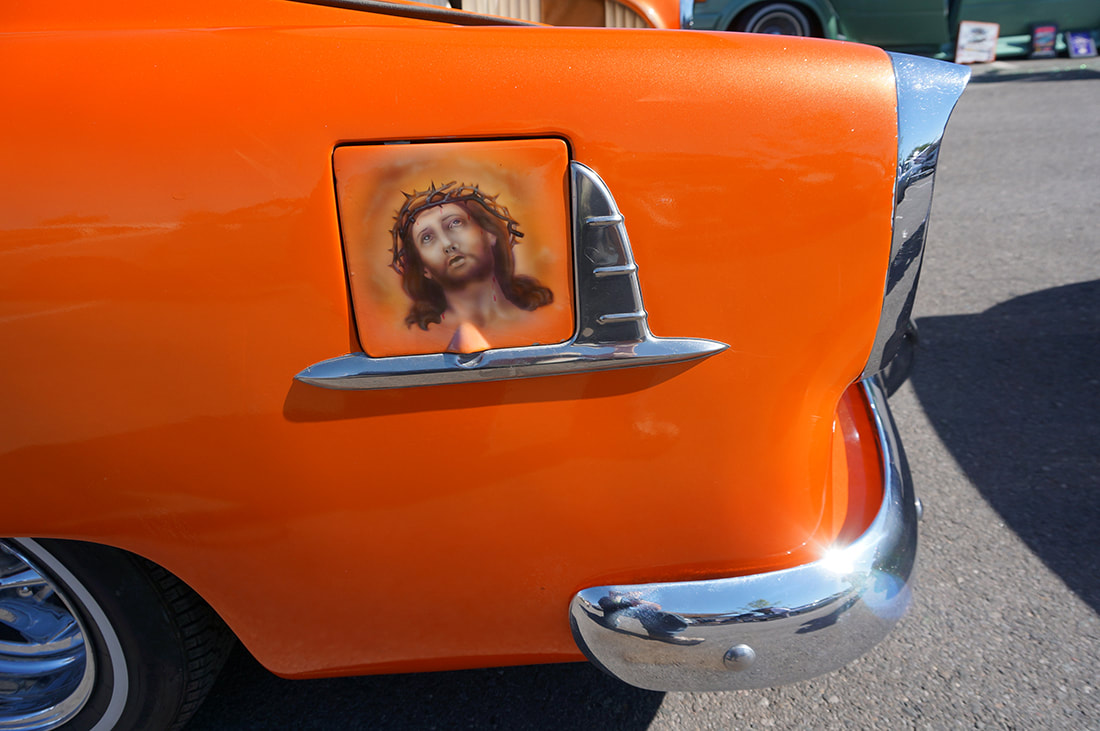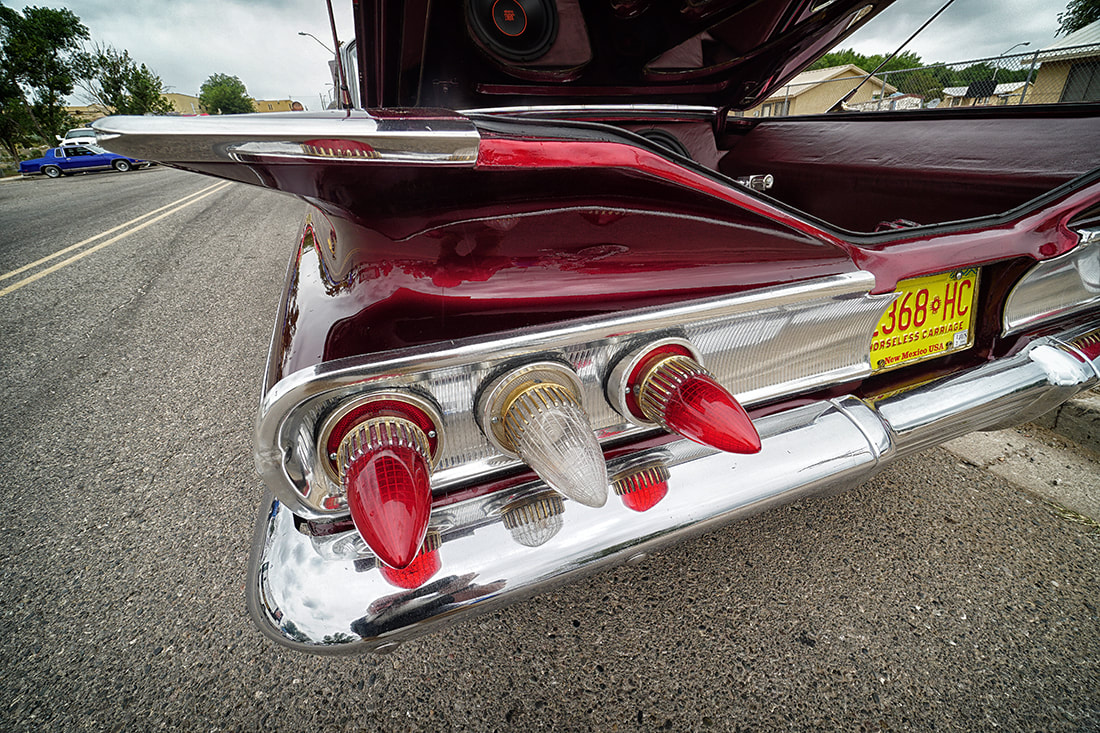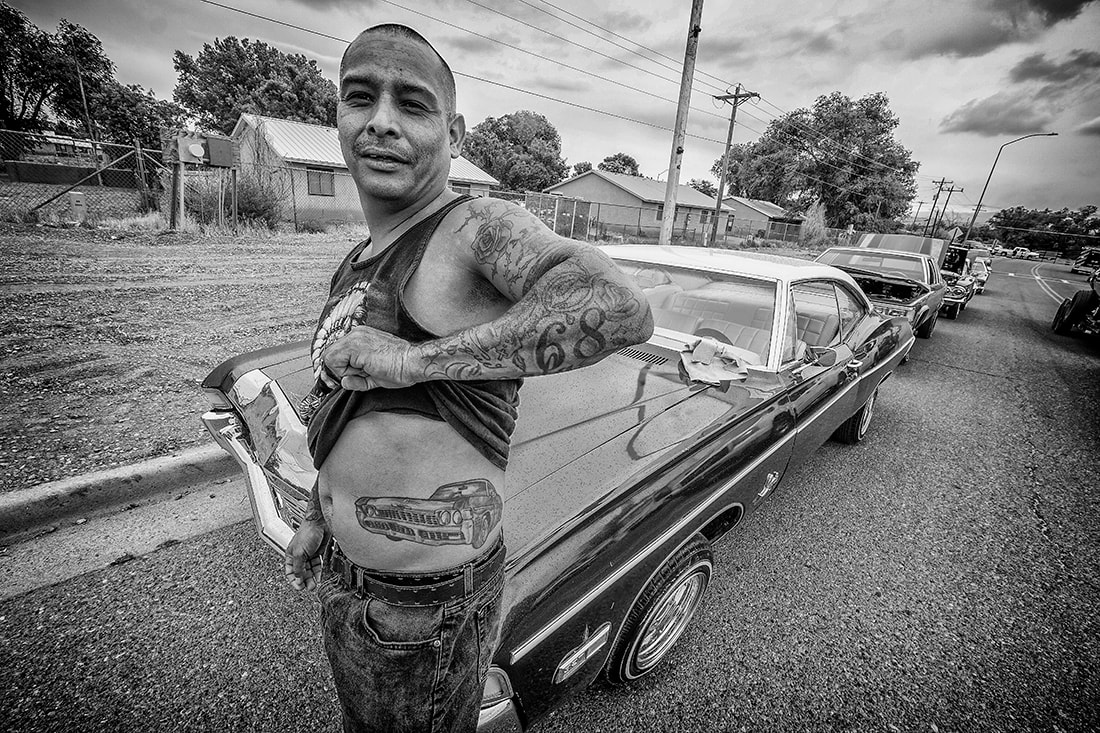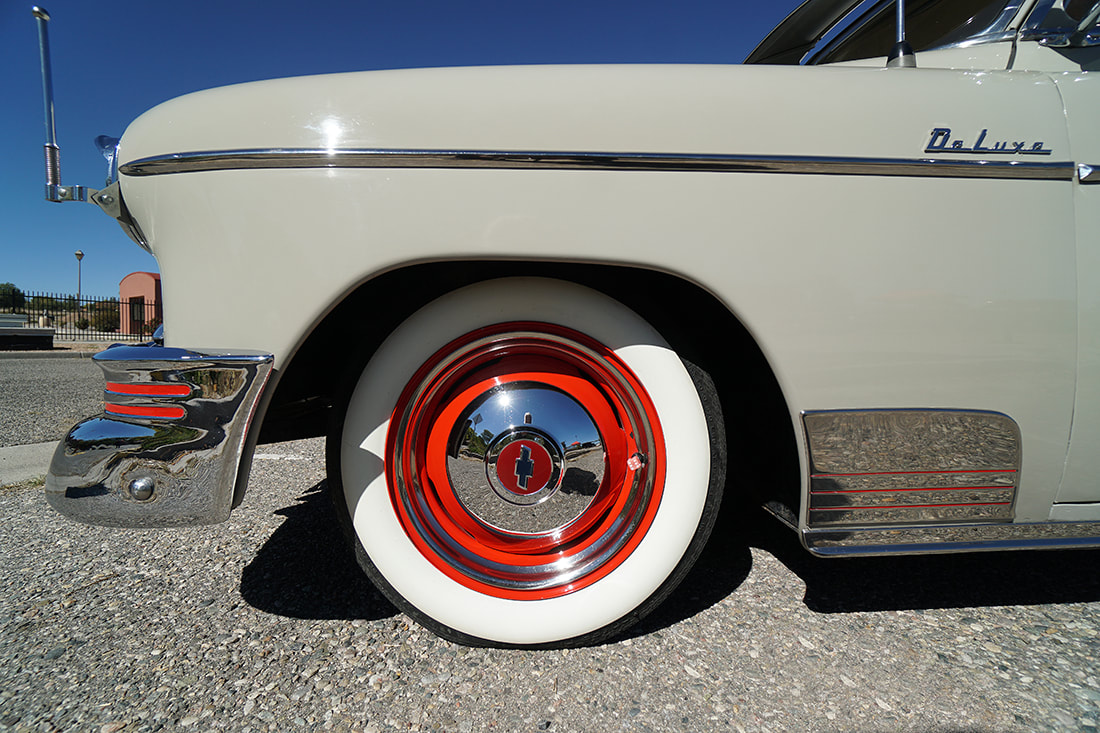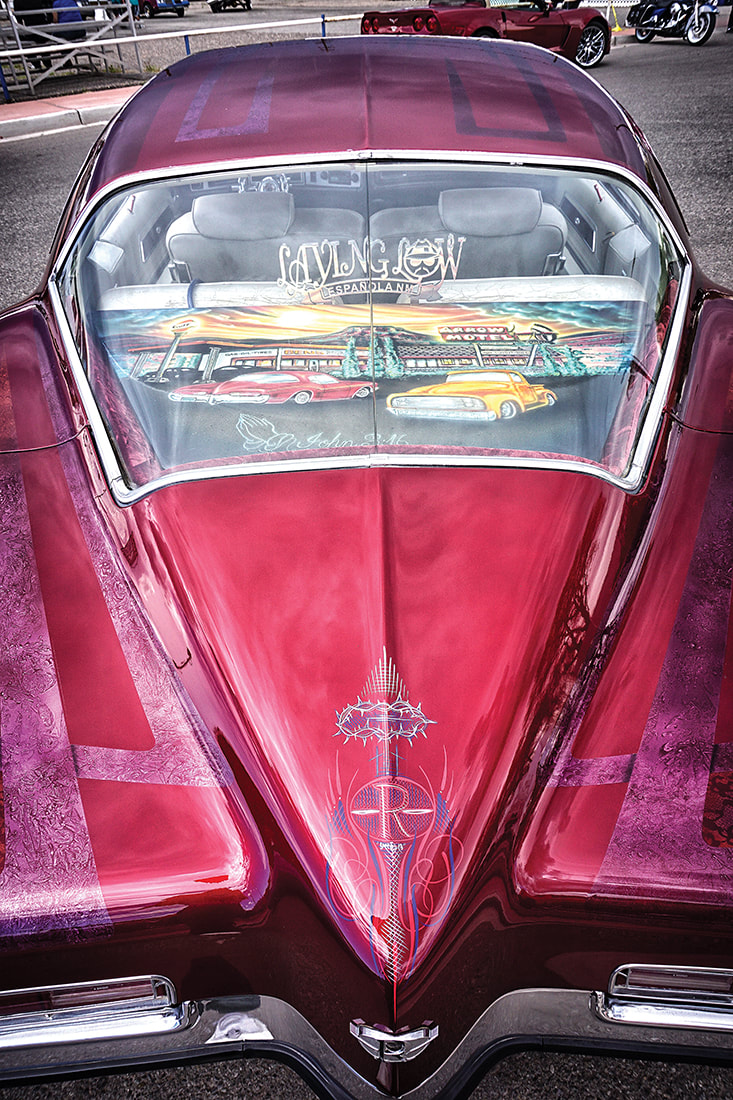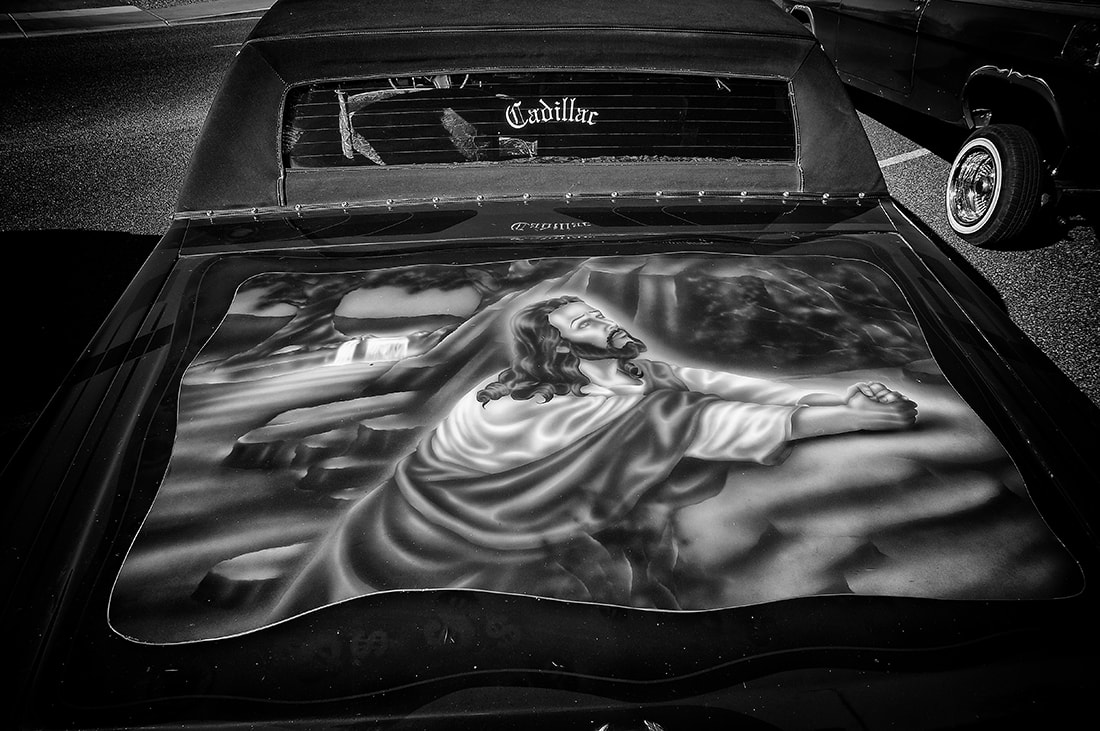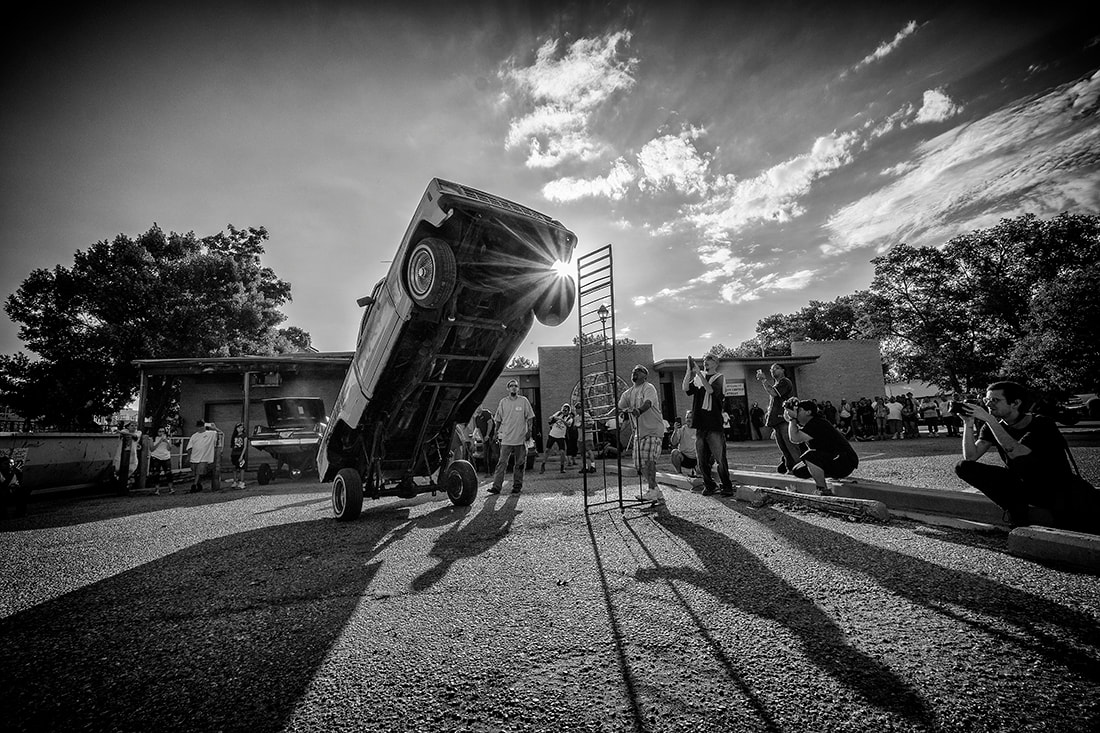Photographing Lowriders
Adding a personal touch to your lowrider and car show photographs.
Thoughts on the subject by photojournalists Bob Eckert and Don Usner.
When you encounter a lowrider car, whether it’s at a car show or on the street, an understandable response is to want to take a photograph of it. Photographer and author Don Usner, who arguably, is one of the best lowrider culture photographers around, and I recently got together and thought we’d offer some thoughts or insights into getting better photos of these marvelous cars.
“Lowrider cars fascinate me because they are material objects of great beauty, and because they reflect a slice of Northern New Mexico culture that I greatly admire,” Usner explained. “The cars are mechanical marvels, elegant, anachronistic art pieces, rolling bits of nostalgia. And the people—they are just great, for their enthusiasm, generosity, humility, and the joy they take in building and sharing their creations.”
People
We’ll start with some suggestions on photographing people, lowrider car owners in this instance.
“You want to establish a rapport with the owner,” Usner said recently. “You want to show genuine interest in the owner and the car.”
The idea of showing interest might seem obvious, but it’s something that can’t be faked. You really need to be interested in the car and owner or the photographs you produce will reflect that lack of interest.
When I photograph cars and owners at a car show, I’ll stop and talk with them before I ever start taking photographs. Owners like to have photographs of their cars taken, but they also like talking about them, and when you talk cars with the owners, you are establishing that all-important rapport that Usner mentioned. The more comfortable the owner is with you, the more natural they will look in your photo.
Having the owner stand with arms at his or her side in front of the car normally looks posed and, often, stilted. A better way to get a natural looking informal portrait is to have the sitting in their car or doing something with it, such as cleaning it in preparation for the show. If you get them doing something, they normally look less posed in the photograph.
When you are taking a photograph of an owner, even if it is quick with a cell phone, you are taking a portrait and with portraits, it’s often good to have the person looking directly into the camera — making eye contact. Usner does this well and still retains a natural feeling. In his photograph of Ray Martinez, page 4, Martinez looks right into the camera but also looks like he is lounging against the side of the pickup truck. He body language is relaxed, telling the viewer that he’s relaxed. Usner achieves the same relaxed pose with his photo of Chris Martinez sitting in his Cadillac and looking right at the audience. It almost appears that Martinez is just arriving home and meeting one of his neighbors in Chimayó. And Usner shot this at an angle, giving the impression that the car and driver are moving toward the viewer even though the car is stopped.
The car
In terms of just photographing the car by itself, try to eliminate as much extraneous stuff as you can so the car ends up being the main subject as opposed to being a part of a confusing scene. Having people huddled around a car might work to show that the car is really attracting attention, but just having people meandering in the background is distracting to the viewer as people attract the eye more than aninanimate object might.
It is sometimes hard to eliminate those extraneous items that show up in a photograph mentioned above and interfere with the viewer focusing on the car and not the confusion surrounding it.
One technique to partially eliminate a messy background is to shoot from a very low angle, putting a lot of the aforementioned background behind the car.
Although color images seem to be everywhere, Usner prefers black and white. Black and white images often rely more on their strength than color images. Sometimes color photos rely on the color as opposed to the strength of the image itself. It there is a flashy paintjob or a colorful sunset behind the car, you might be impressed simply because of the intense colors and not by the strength of the photograph. In Usner’s photos, he relies strictly on his eye for dramatic lighting and his attention to timing — what Henri Cartier Bresson called “The Decisive Moment.” That moment when the light is just right and the subject — if it is a person — is offering a glimpse into their personality that is fleeting.
“I prefer black and white because... First, presenting a photo in black and white makes it automatically an abstraction. Just making the conversion away from color says, ‘I am interpreting this, not just recording it,’” Usner says. “And that means I can manipulate the image to make it do what I want it to, to evoke the emotional reaction I want in the viewer. A color photo seems to me to be more common, more of a simple recording of a scene, and everyone does it, ten million times a minute. Thoughtful and well-balanced black and white photos, though, are much more rare and require a certain degree of skill and aesthetic understanding that most casual photographers lack. I enjoy making images that I think are distinctive for their rendering of black and white tones. Also, in terms of aesthetic impact, color is secondary to value; it’s just not necessary to conveying the feeling of an image.”
Usner will take a photograph is color and convert it to black and white in his computer. If you don’t have photographic software on your computer, you can often have your camera or cell phone convert the images for you.
Usner explains that the photos that he likes the most usually mean a lot to him because of the moment they represent, often more than the strength of the image, and the meaning of the moment usually refers to an interaction with a person or people.
One of the things I find most frustrating about car shows is they are often staged during the middle of the day and the light is pretty harsh and shadows about. I’ve really enjoyed the shows where there is a slight overcast or cloud cover, which offers a more uniform light.
Details
“Perfection is in the details,” is a well-known quote. When you are inspecting a lowrider, you’ll no doubt be taking notice of the detailing the owner has accented. These might be an ornate hood ornament, s memorial painting or unusual pieces of chrome. It’s tempting to show the whole car, but getting in close and focusing on specific details tells the viewer a lot about the car and the owner’s intentions when she or he was doing the customization. The details will also show you just how committed the owner is to doing a “complete” job and not cutting corners in the process, but how do you go about photographing a detail and setting it apart for the overall scene. How do you isolate the detail?
Usner does this well in his photo of Randy Martinez and the car mural, page 5. Oftentimes you encounter murals on cars, and often they are on the hood or trunk, which means, if the trunk or hood are closed, you are shooting down on the subject. With the hood up in Usner’s photo, you get a much better viewer of the mural and of Martinez standing next to it. Sort of a two-for-one: an informal portrait and a lovely detail shot.
In the shot of the 1952 Packard hood ornament, page 5, I wanted to show the attention to detail paid by American car manufacturers in the ‘40s and ‘50s. By showing this marvelous hood ornament, your realize that the manufacturers and car designers of the time wanted their cars to stand out and be unique, not generic-looking like they are now. This was taken in the middle of the day and light is less flattering mid-day than early in the morning or late in the afternoon, but in this instance the sun shining down strongly from above added a highlight to the hood ornament, which attracts the viewer’s attention and makes the ornament stand out and become the main subject.
Is it a good photo?
Usner says the most difficult thing about taking photos, at least for him, is the technology. Remembering to manage the technology. He says he often gets caught up in the moment, in the conversation, in the pleasure of the interaction, that he’ll forget to recheck his exposure or focus, or I fail to notice details of the surroundings that would enhance the photos he’s making. Also, he’ll still get caught in “aiming” the camera instead of framing the scene, and he says he has to consciously remind himself of that.
The offbeat or unexpected
One of the things I love most about photographing the car shows are those times when the unexpected happens, like having to push an overheated car to its assigned parking spot, page 7, or the woman, with just her legs protruding from the driver’s window, looking for something inside the car at the car wash.
I enjoy encountering these offbeat or unexpected moments. The add a human touch to the lowrider culture. I also like them because they are like the yang to the yin of very formal lowrider car/owner photographs.
And here’s a tip. Most of the car owners go to the car wash before taking their car to a car show or events like Lowrider Day, so if you want to check out cars and have them in a less structured atmosphere, the car wash is a great place to hang out pre-show or –event.
Asked what he feels when he creates a photo that is particularly pleased with, Usner responded, “I may feel simply satisfied, pleased that all the elements have come together in the moment and in the frame to say what I want to say. When it works especially well, I may feel elated, and like I am the recipient of a gift, because in the best photos I’m not in total control. There’s a synchrony that I happen to synch with, and it is a gift that I always acknowledge when it happens, with a little nod skyward. I may also feel relieved, because I have managed to put together the photo I wanted, which often comes after a lot of struggle to be present, to find the right light, to keep on top of the technology—sometimes returning to a spot over and over, visiting with someone multiple times—and when it works, I can relax and just enjoy because I got ‘the shot.”
Remember, these are just tips, not hard and fast rules, and as we all know, rules are often meant to be broken. The main thing is to have fun, and remember, the more you photograph, the better your photographs will become.
“Lowrider cars fascinate me because they are material objects of great beauty, and because they reflect a slice of Northern New Mexico culture that I greatly admire,” Usner explained. “The cars are mechanical marvels, elegant, anachronistic art pieces, rolling bits of nostalgia. And the people—they are just great, for their enthusiasm, generosity, humility, and the joy they take in building and sharing their creations.”
People
We’ll start with some suggestions on photographing people, lowrider car owners in this instance.
“You want to establish a rapport with the owner,” Usner said recently. “You want to show genuine interest in the owner and the car.”
The idea of showing interest might seem obvious, but it’s something that can’t be faked. You really need to be interested in the car and owner or the photographs you produce will reflect that lack of interest.
When I photograph cars and owners at a car show, I’ll stop and talk with them before I ever start taking photographs. Owners like to have photographs of their cars taken, but they also like talking about them, and when you talk cars with the owners, you are establishing that all-important rapport that Usner mentioned. The more comfortable the owner is with you, the more natural they will look in your photo.
Having the owner stand with arms at his or her side in front of the car normally looks posed and, often, stilted. A better way to get a natural looking informal portrait is to have the sitting in their car or doing something with it, such as cleaning it in preparation for the show. If you get them doing something, they normally look less posed in the photograph.
When you are taking a photograph of an owner, even if it is quick with a cell phone, you are taking a portrait and with portraits, it’s often good to have the person looking directly into the camera — making eye contact. Usner does this well and still retains a natural feeling. In his photograph of Ray Martinez, page 4, Martinez looks right into the camera but also looks like he is lounging against the side of the pickup truck. He body language is relaxed, telling the viewer that he’s relaxed. Usner achieves the same relaxed pose with his photo of Chris Martinez sitting in his Cadillac and looking right at the audience. It almost appears that Martinez is just arriving home and meeting one of his neighbors in Chimayó. And Usner shot this at an angle, giving the impression that the car and driver are moving toward the viewer even though the car is stopped.
The car
In terms of just photographing the car by itself, try to eliminate as much extraneous stuff as you can so the car ends up being the main subject as opposed to being a part of a confusing scene. Having people huddled around a car might work to show that the car is really attracting attention, but just having people meandering in the background is distracting to the viewer as people attract the eye more than aninanimate object might.
It is sometimes hard to eliminate those extraneous items that show up in a photograph mentioned above and interfere with the viewer focusing on the car and not the confusion surrounding it.
One technique to partially eliminate a messy background is to shoot from a very low angle, putting a lot of the aforementioned background behind the car.
Although color images seem to be everywhere, Usner prefers black and white. Black and white images often rely more on their strength than color images. Sometimes color photos rely on the color as opposed to the strength of the image itself. It there is a flashy paintjob or a colorful sunset behind the car, you might be impressed simply because of the intense colors and not by the strength of the photograph. In Usner’s photos, he relies strictly on his eye for dramatic lighting and his attention to timing — what Henri Cartier Bresson called “The Decisive Moment.” That moment when the light is just right and the subject — if it is a person — is offering a glimpse into their personality that is fleeting.
“I prefer black and white because... First, presenting a photo in black and white makes it automatically an abstraction. Just making the conversion away from color says, ‘I am interpreting this, not just recording it,’” Usner says. “And that means I can manipulate the image to make it do what I want it to, to evoke the emotional reaction I want in the viewer. A color photo seems to me to be more common, more of a simple recording of a scene, and everyone does it, ten million times a minute. Thoughtful and well-balanced black and white photos, though, are much more rare and require a certain degree of skill and aesthetic understanding that most casual photographers lack. I enjoy making images that I think are distinctive for their rendering of black and white tones. Also, in terms of aesthetic impact, color is secondary to value; it’s just not necessary to conveying the feeling of an image.”
Usner will take a photograph is color and convert it to black and white in his computer. If you don’t have photographic software on your computer, you can often have your camera or cell phone convert the images for you.
Usner explains that the photos that he likes the most usually mean a lot to him because of the moment they represent, often more than the strength of the image, and the meaning of the moment usually refers to an interaction with a person or people.
One of the things I find most frustrating about car shows is they are often staged during the middle of the day and the light is pretty harsh and shadows about. I’ve really enjoyed the shows where there is a slight overcast or cloud cover, which offers a more uniform light.
Details
“Perfection is in the details,” is a well-known quote. When you are inspecting a lowrider, you’ll no doubt be taking notice of the detailing the owner has accented. These might be an ornate hood ornament, s memorial painting or unusual pieces of chrome. It’s tempting to show the whole car, but getting in close and focusing on specific details tells the viewer a lot about the car and the owner’s intentions when she or he was doing the customization. The details will also show you just how committed the owner is to doing a “complete” job and not cutting corners in the process, but how do you go about photographing a detail and setting it apart for the overall scene. How do you isolate the detail?
Usner does this well in his photo of Randy Martinez and the car mural, page 5. Oftentimes you encounter murals on cars, and often they are on the hood or trunk, which means, if the trunk or hood are closed, you are shooting down on the subject. With the hood up in Usner’s photo, you get a much better viewer of the mural and of Martinez standing next to it. Sort of a two-for-one: an informal portrait and a lovely detail shot.
In the shot of the 1952 Packard hood ornament, page 5, I wanted to show the attention to detail paid by American car manufacturers in the ‘40s and ‘50s. By showing this marvelous hood ornament, your realize that the manufacturers and car designers of the time wanted their cars to stand out and be unique, not generic-looking like they are now. This was taken in the middle of the day and light is less flattering mid-day than early in the morning or late in the afternoon, but in this instance the sun shining down strongly from above added a highlight to the hood ornament, which attracts the viewer’s attention and makes the ornament stand out and become the main subject.
Is it a good photo?
Usner says the most difficult thing about taking photos, at least for him, is the technology. Remembering to manage the technology. He says he often gets caught up in the moment, in the conversation, in the pleasure of the interaction, that he’ll forget to recheck his exposure or focus, or I fail to notice details of the surroundings that would enhance the photos he’s making. Also, he’ll still get caught in “aiming” the camera instead of framing the scene, and he says he has to consciously remind himself of that.
The offbeat or unexpected
One of the things I love most about photographing the car shows are those times when the unexpected happens, like having to push an overheated car to its assigned parking spot, page 7, or the woman, with just her legs protruding from the driver’s window, looking for something inside the car at the car wash.
I enjoy encountering these offbeat or unexpected moments. The add a human touch to the lowrider culture. I also like them because they are like the yang to the yin of very formal lowrider car/owner photographs.
And here’s a tip. Most of the car owners go to the car wash before taking their car to a car show or events like Lowrider Day, so if you want to check out cars and have them in a less structured atmosphere, the car wash is a great place to hang out pre-show or –event.
Asked what he feels when he creates a photo that is particularly pleased with, Usner responded, “I may feel simply satisfied, pleased that all the elements have come together in the moment and in the frame to say what I want to say. When it works especially well, I may feel elated, and like I am the recipient of a gift, because in the best photos I’m not in total control. There’s a synchrony that I happen to synch with, and it is a gift that I always acknowledge when it happens, with a little nod skyward. I may also feel relieved, because I have managed to put together the photo I wanted, which often comes after a lot of struggle to be present, to find the right light, to keep on top of the technology—sometimes returning to a spot over and over, visiting with someone multiple times—and when it works, I can relax and just enjoy because I got ‘the shot.”
Remember, these are just tips, not hard and fast rules, and as we all know, rules are often meant to be broken. The main thing is to have fun, and remember, the more you photograph, the better your photographs will become.
To contact Bob Eckert for assignments, consultations or workshops, please email [email protected]
or use the contact form on the About page
or use the contact form on the About page
